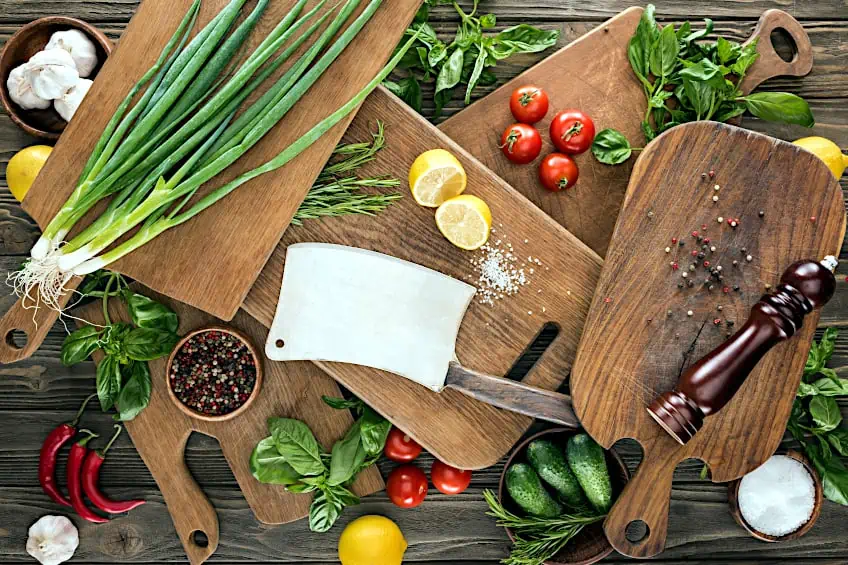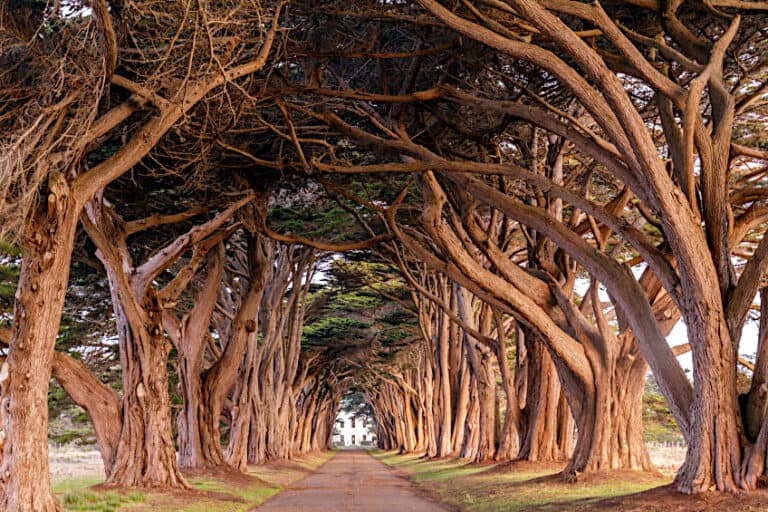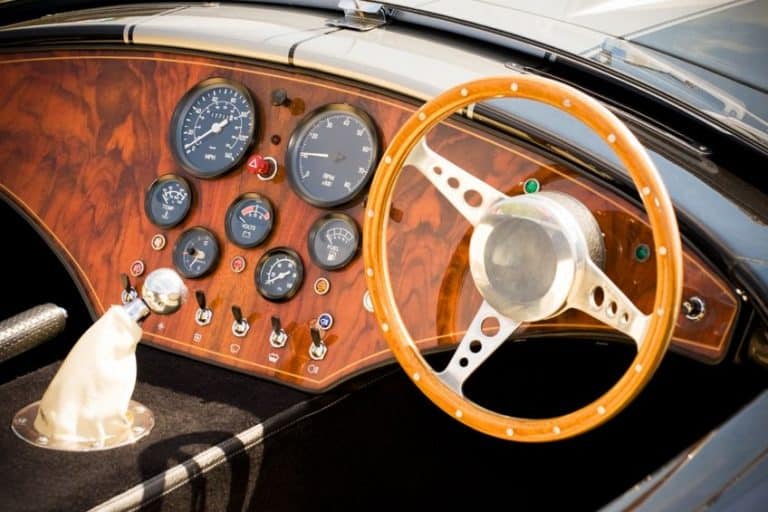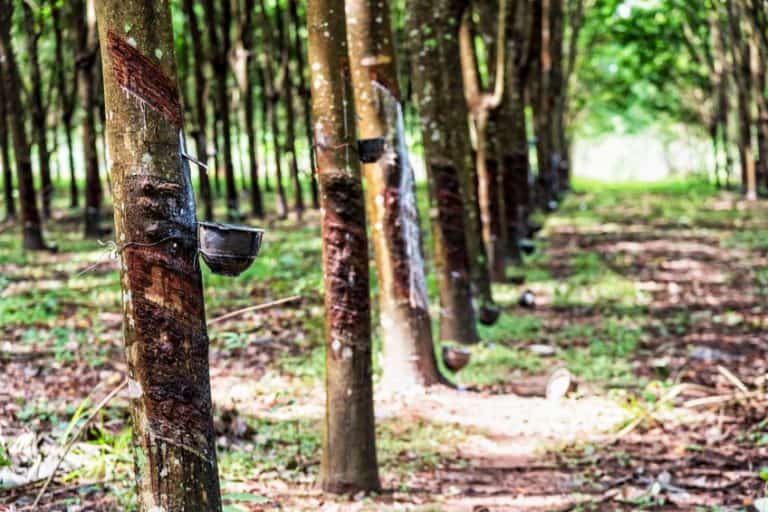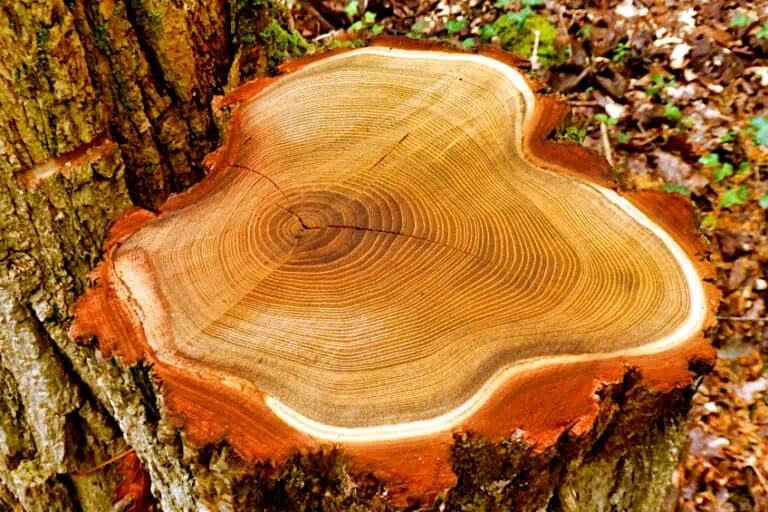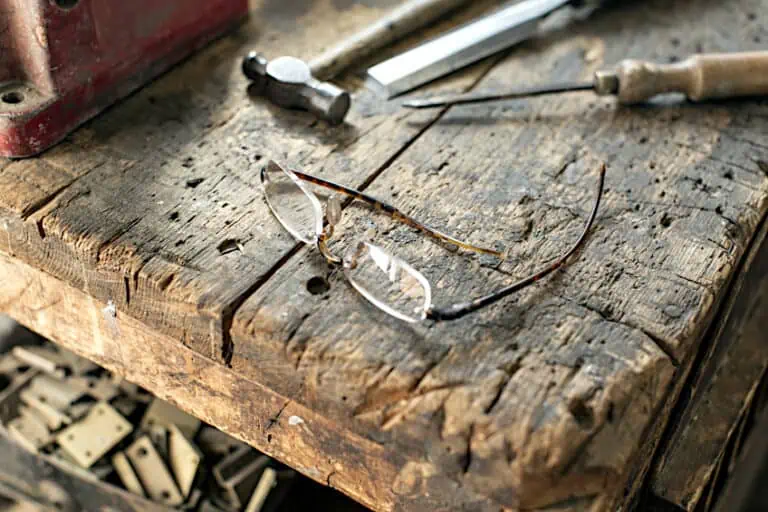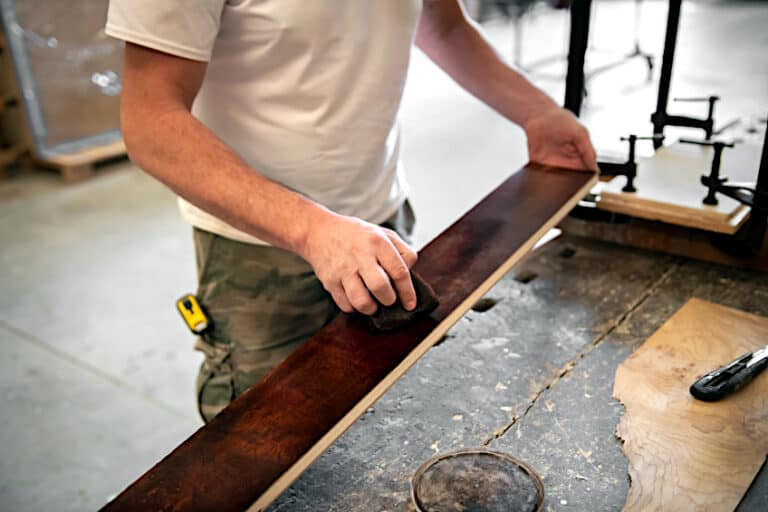Best Woods for Cutting Boards – Tough and Food-Safe Timbers
Recently, there has been a surge in the popularity of wood crafts. Both professional crafters and DIY enthusiasts have been dabbling in the creation of all sorts of interesting and useful things like spice racks, decorative plaques, coasters, and even ornate kitchenware. One of the most popular wood crafting pastimes in recent years appears to be the creation of cutting boards, which makes sense considering how often they can be used, and that they are relatively easy to make. However, not all wood species are suitable for creating cutting boards, so let’s have a look at what the best woods for cutting boards are, what characteristics you should look out for, what wood not to use for cutting boards, and whether both soft and hardwood species are suited for this application.
Table of Contents
What Are the Best Woods for Cutting Boards?
Unfortunately, not all wood species are created equal. Some wood species are simply better suited for the creation of cutting boards than others. This doesn’t mean that it’s impossible to make a cutting board out of most wood species, but simply that they wouldn’t be as good as others. This being said, let’s have a look at some of the best woods for cutting boards as well as some of the characteristics that make them a good choice.
| Wood Species | Hardness Grade (Janka Scale) | Color | Cost |
| Teak | 1,070 lbf | Light to dark brown | $25,00 – $500,00 |
| Beach | 1,300 lbf | Light cream to medium tan/brown | $15,00 – $100,00 |
| Maple | 1,450 lbf | Creamy white | $20,00 – $150,00 |
| Walnut | 1,010 lbf | Rich to light brown | $20,00 – $200,00 |
| Cypress | 510 lbf | light, yellowish brown | $5,00 – $35,00 |
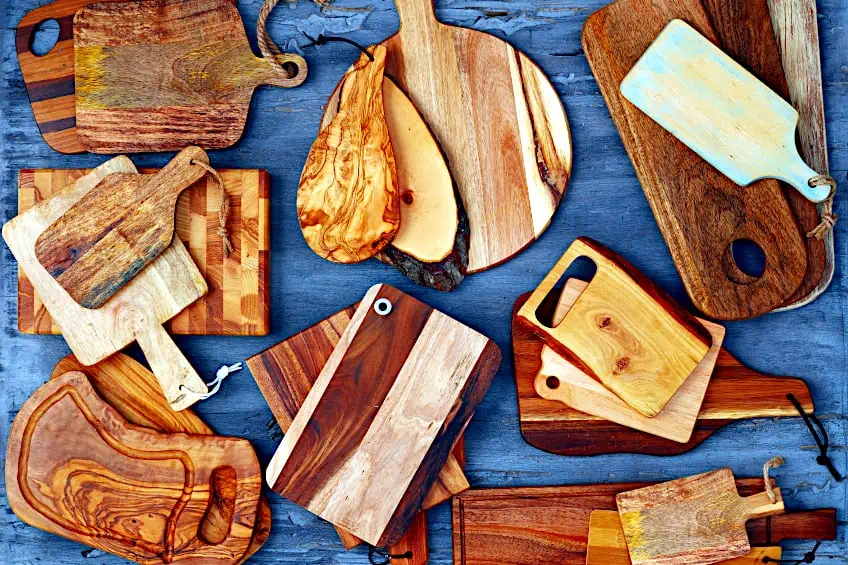
Teak Wood
One of the most important characteristics of any wood that is used to make a cutting board is hardness. Thankfully teak has a hardness in spades, having a hardness rating of around 1,070lbf on the Janka scale. Teak is even harder than Walnut wood, being able to resist an impressive amount of impact and abrasion. However, Teak wood is softer than maple, even though it is a more sought-after wood in some circles.
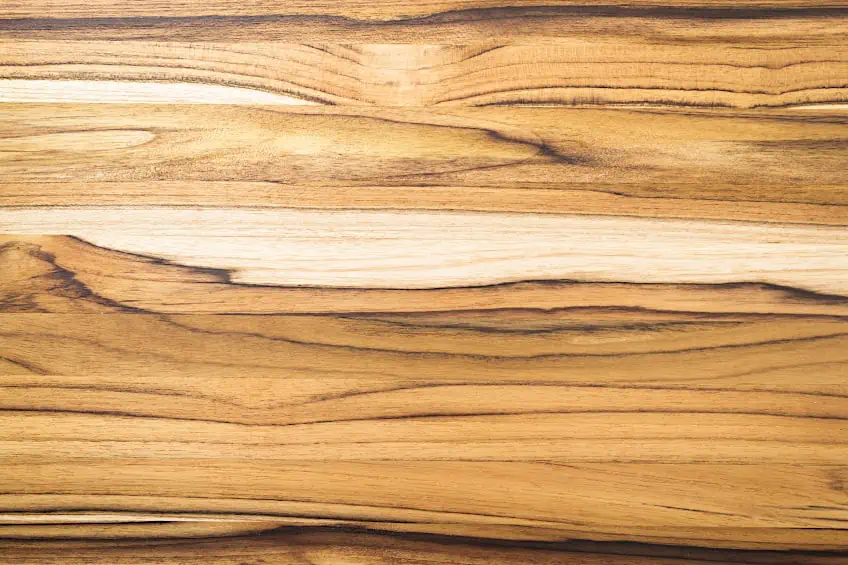
The grain of teak wood is closely packed together, and it’s this density that gives it the hardness required to be used as a cutting board. Teak wood also has a high concentration of silica in its wood fibers, which makes it a bit more durable, but it will cause any knives used on a teak cutting board to dull over time. Teak is highly porous, so we recommend sealing it with a food-safe epoxy to ensure that these recesses don’t harbor any grime or bacteria over time.
Beech Wood
When it comes to making cutting boards, beech wood tends to be a pretty sought-after material Why? Well, beech wood has a rating of 1,300lbf on the Janka scale, making it the second toughest wood on the list besides maple! It’s objectively better than teak wood too since it won’t dull your knife blades over time thanks to its low silica count.
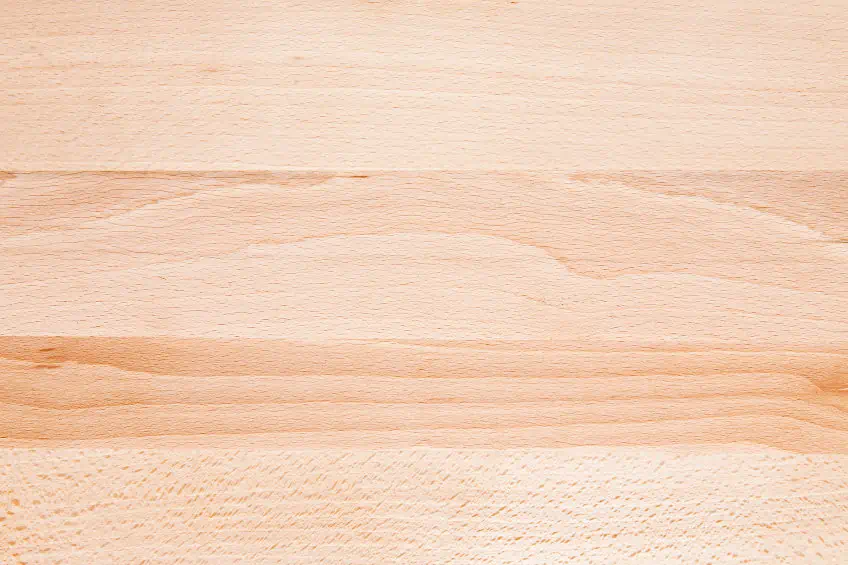
There are some drawbacks to using beach as a wood for cutting boards though. Beech has a light brown-pink color, which means that any stains you collect over time will be highly visible on the board’s surface. They also tend to shrink over time, so regular conditioning of your beech cutting board is highly recommended. On the upside, beach wood has small pores, which means it’s less likely to accumulate moisture, bacteria, or mold over time.
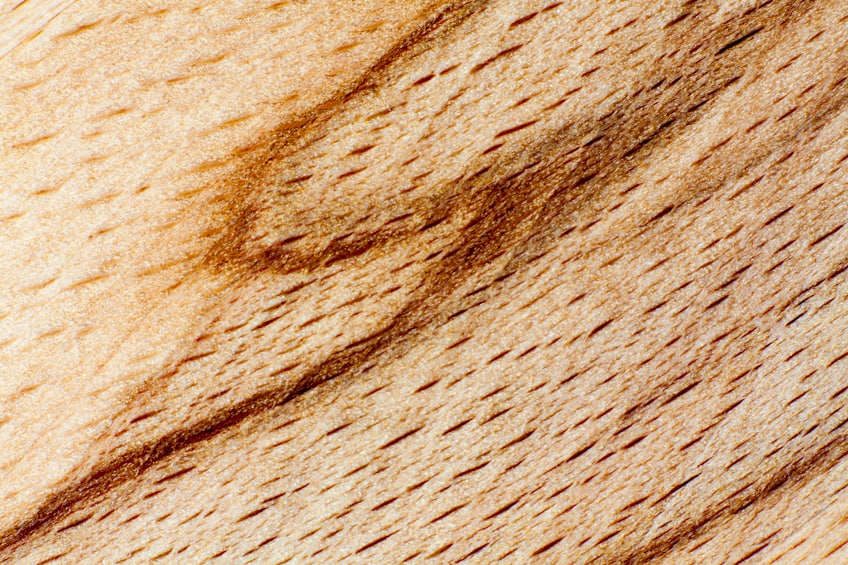
Beech tends to be one of the best hardwoods for cutting boards due to it being not too hard and not too soft. This ensures that the surface of your board will not be excessively damaged over time, and the cutting edge of your knives and other utensils will not quickly be dulled, especially if you intend on using your beech wood board often.
Beech tends to be one of the best hardwoods for cutting boards due to it being not too hard and not too soft. This ensures that the surface of your board will not be excessively damaged over time, and the cutting edge of your knives and other utensils will not quickly be dulled, especially if you intend on using your beech wood board often.
Maple Wood
Maple is objectively the best wood for cutting boards by a country mile. Not only is maple wood hard (with a staggering 1450 lbf on the Janka scale) but it looks really good too! Maple has a creamy white color to it, which isn’t too light as to make every stain it accumulates visible, but not so dark as to make it unpleasant to look at.
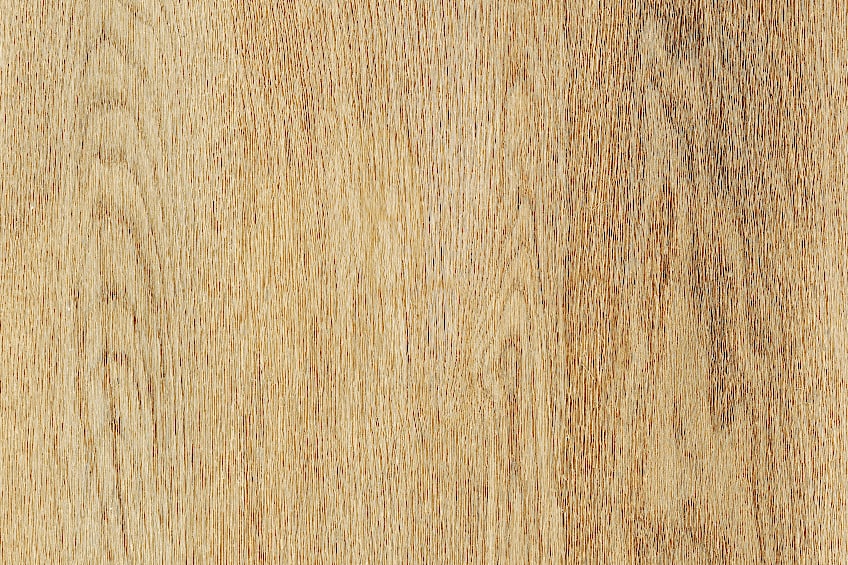
What else makes maple the best cutting board wood? Well, even though maple is a really hard wood, it won’t damage knives and any other utensils you’d like to use on your board. Maple also has some of the densest wood grain and lowest porosity of any wood on this list, ensuring that your cutting board (and the food you prepare on it) are safe from moisture, bacteria, and long-lasting stains.
If you think all of this sounds a bit too good to be true, it sort of is. Maple tends to be the most expensive cutting board wood on the market, so much so that even soft maple cutting boards can be quite pricey. Additionally, due to maple being a hardwood it tends to shrink over time, especially when exposed to high humidity. Since kitchens tend to be quite humid, you should see that your maple cutting board is conditioned regularly to ensure its longevity.
Walnut Wood
In almost any other application or industry, walnut would be valued above maple. However, due to walnut being considerably softer (1,010lbf on the Janka scale) than any other wood we have mentioned so far, cutting boards made from it tend to be cheaper. Walnut wood is also more porous, which means it will have to be conditioned and/or sealed to prevent bacteria and moisture build-up.
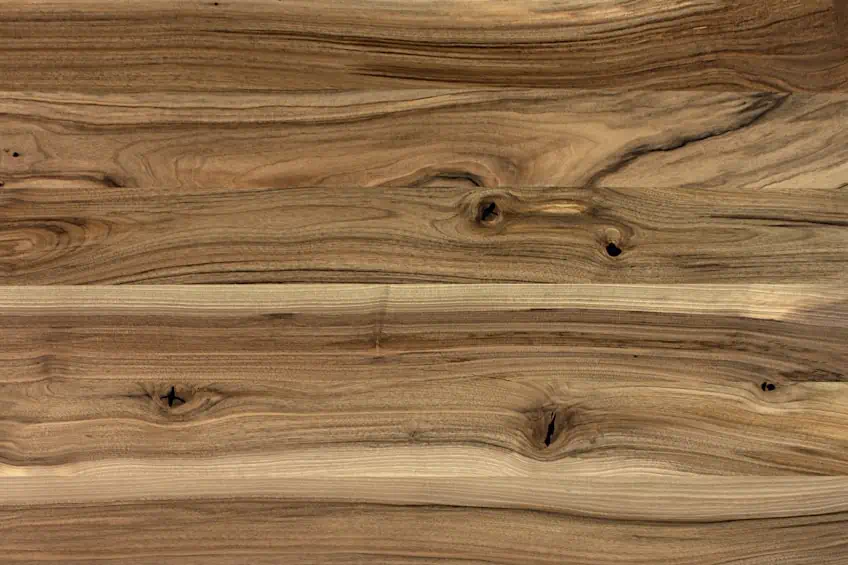
Walnut cutting boards aren’t all bad though. Due to its relative softness, walnut wood will not damage the blades of your knives or other utensils. It also has a deep chocolate brown color that hides stains and scratches fairly well, plus it looks naturally classy regardless of your kitchen’s color scheme. However, if you’re heavy-handed and use your board often, you might begin to notice dents and scratches pretty quickly due to the soft nature of the wood.
Cypress Wood
Cypress might not be the best cutting board wood if we’re using any of the aforementioned woods as a benchmark, but it has loads of advantages. Cypress wood cutting boards are most popular in Japan, and even though they only have a Janka hardness rating of 510lbf, they have attributes that (arguably) compensate for this.
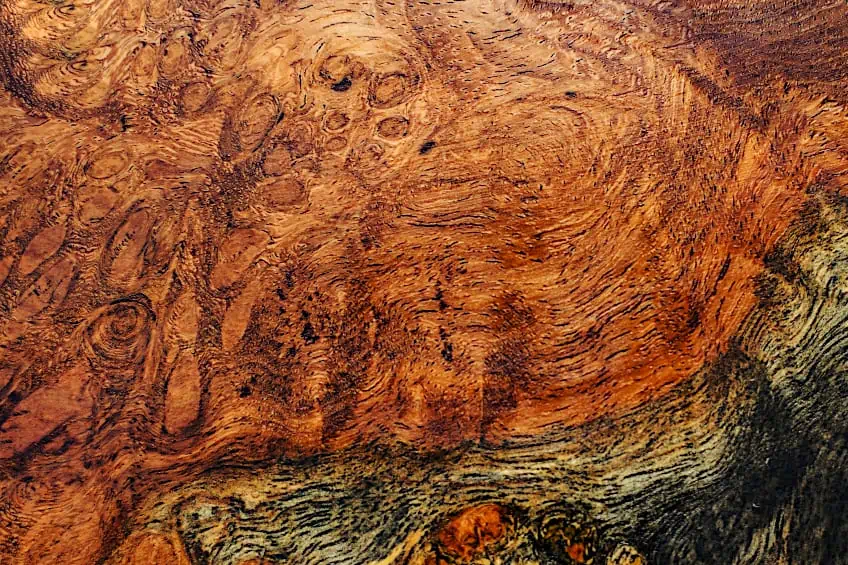
Cypress wood has a natural aversion to things like moisture, mold, and bacteria, which has led to their widespread use only in Japan, but all over the world by professional chefs too! The wood is fairly durable for a wood with such a low Janka hardness rating, which is ideal considering that its softness will ensure that your knives won’t dull over time.
What Characteristics Should You Look for in a Cutting Board?
Different species of wood tend to have different characteristics, each with their respective advantages and disadvantages depending on the application. Below are a few characteristics you should look for in a good cutting wood board, as well as why these characteristics are important, and what they will contribute to your cooking experience.
The Janka Hardness Rating
The Janka hardness scale is used to determine how much force can be applied to a given material before it is overwhelmed. As you can imagine, a hard cutting board means that the surface of the board will not damage very easily. This means that you won’t have to contend with scratches and dents, which can become a breeding ground for bacteria, moisture, and eventually mold.
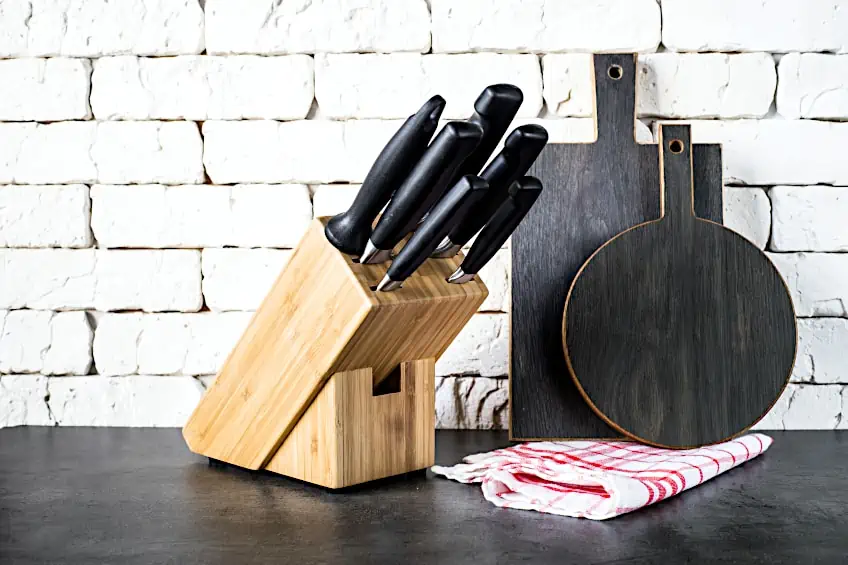
While a harder wood species will ensure that your board lasts longer, there is also a possibility that the cutting edge of your knives and other cooking instruments could be damaged due to the wood’s lack of malleability. This being said, it depends largely on the amount of force applied, and how frequently you’ll be using your board.
The Porosity of the Wood
The term porosity refers to how porous the surface of the wood board is. Any solid wood board you choose will have pours, but the size and frequency of the pores on the wood’s surface are what matters when it comes to cutting boards. Why? Large pores that can be seen with the naked eye mean that the board will be more susceptible to things like moisture, bacteria, and mold. The greater the density of a wood and the closer its grains are packed together, the less likely it is that moisture carrying bacteria and fungus will be able to penetrate into the core of your cutting board.
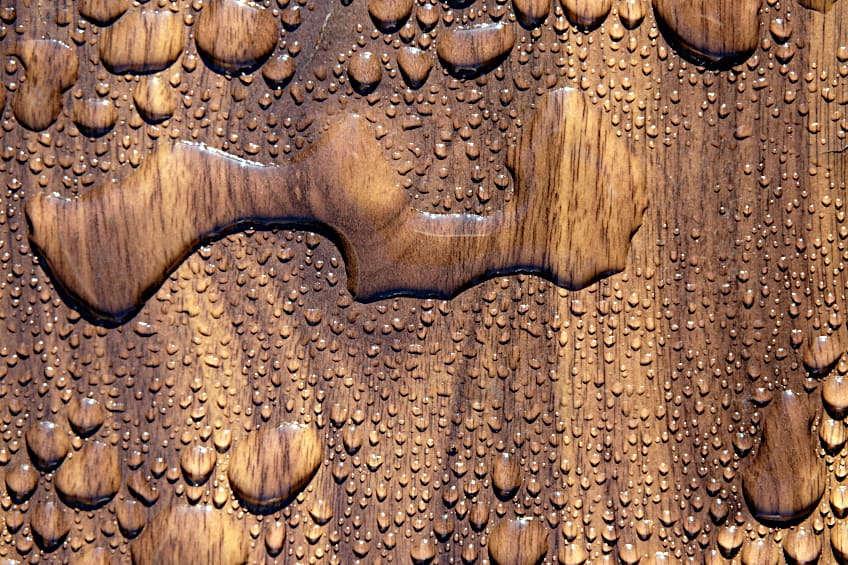
Smaller pores also mean that the board is less likely to warp or shrink over time, which is why high density cutting boards made of low-porosity wood species are so sought after and are typically more expensive.
The Toxicity of the Wood
Considering that the wood you choose will be in direct contact with foodstuff, it’s a good idea to ensure that your wood is non-toxic. How do you ensure that your wood of choice is safe for use with foodstuff? Well, manufacturers usually do the work for you, as there are production standards to adhere to, but just in case, you should stick to tree species that are capable of bearing fruit.
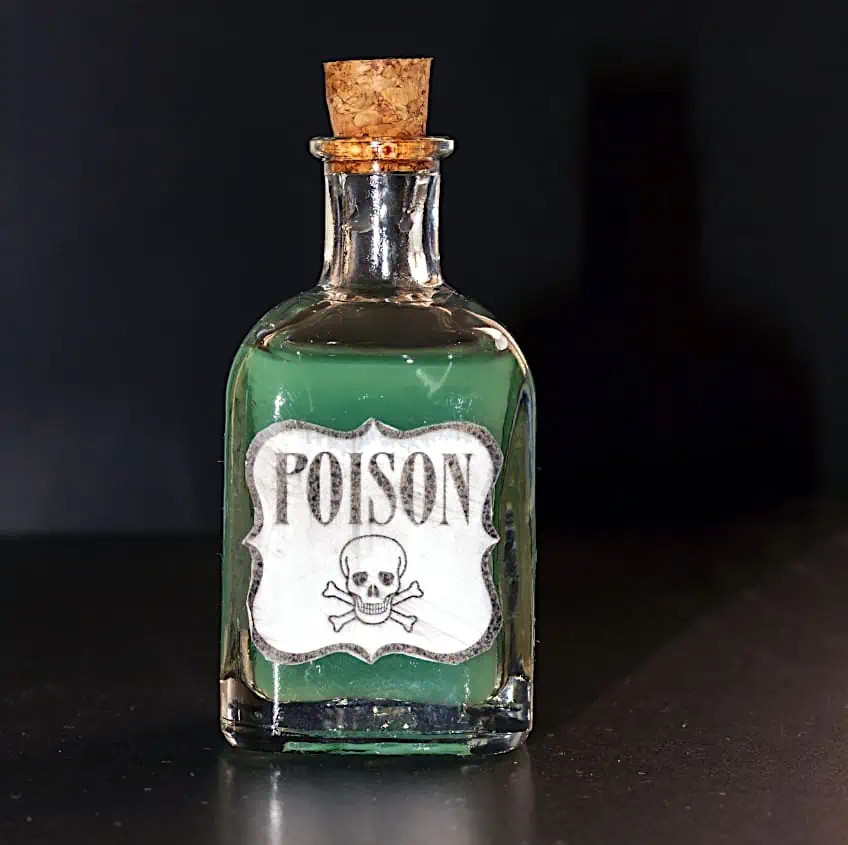
The wood produced by these trees is typically food safe and is widely used to create cutting boards around the world. If you aren’t satisfied with the aforementioned guidelines, you could simply coat the surface of your cutting board in epoxy resin. Once completely cured, epoxy resin is 100% food safe, and will ensure your board lasts even longer!
How Often the Wood Needs to Be Conditioned
Whether you’re a professional or simply enjoy having a high-quality cutting board at home, conditioning your cutting board is important to its performance and longevity. What does it mean to condition the surface of your cutting board? Conditioning your board simply means applying food-grade mineral oil to the surface of your board and allowing it to set in.
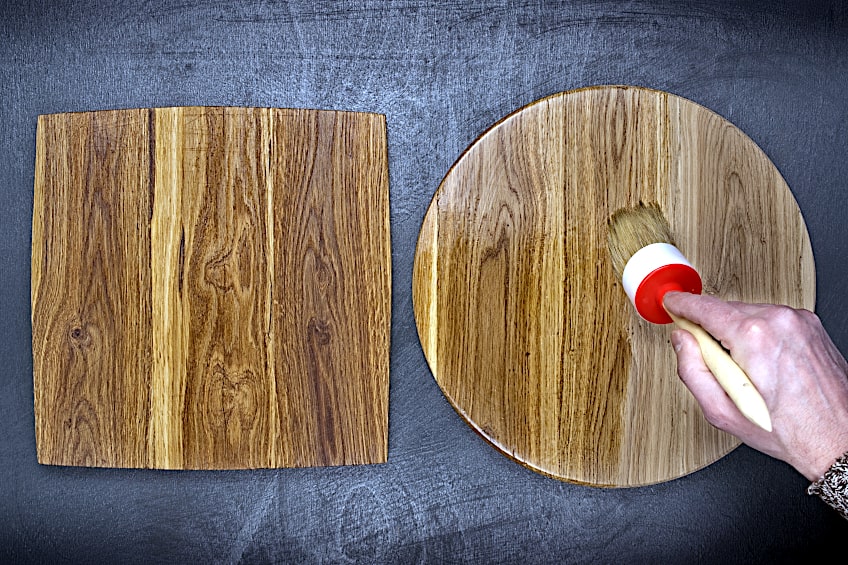
Why would you do this? Well, certain wood species tend to shrink and warp over time as they come into contact with humid environments. They lose moisture, and if said moisture is not restored it can ruin what should be a perfectly good cutting board. This being said, some wood species need to be conditioned more often than others, so you should keep this in mind when choosing your next cutting board.
The Cost of the Cutting Board
Unless you’re a professional chef or have a ton of money burning a hole in your pocket, the cost is going to play an important factor in the type of cutting board you choose to purchase, and rightfully so. At the end of the day, everyone wants the most bang for their buck, so you should choose a wood species that best suits your application, frequency of use, and budget.
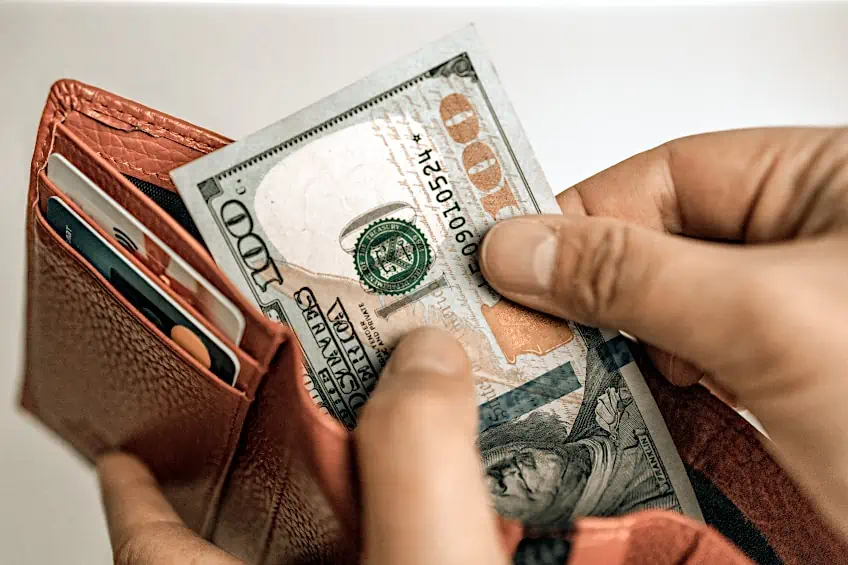
After all, there isn’t much of a point in purchasing a $500,00 cutting board if you’re just going to be chopping up some onions on it two days a week. Besides, if you consider the time and money it will take to maintain a board like this, it begins to make far more sense to purchase a cypress cutting board instead of a maple one.
End Grain or Edge Grain Wooden Board
If you aren’t super familiar with the nuances of the culinary world, this might seem a bit confusing. After all, a cutting board is a cutting board, right? Not really, while the wood species used to make the board are definitely important, how said wood has been arranged can affect your cutting experience and the longevity of your board.
End Grain Cutting Board
End grain cutting boards can be between four to five times more expensive than edge grain cutting boards and for good reason. End grain boards are created by taking wooden boards and fusing them together. Once fused, the boards are cut so that the short ends of the wood face upward, which becomes the face of your cutting board.
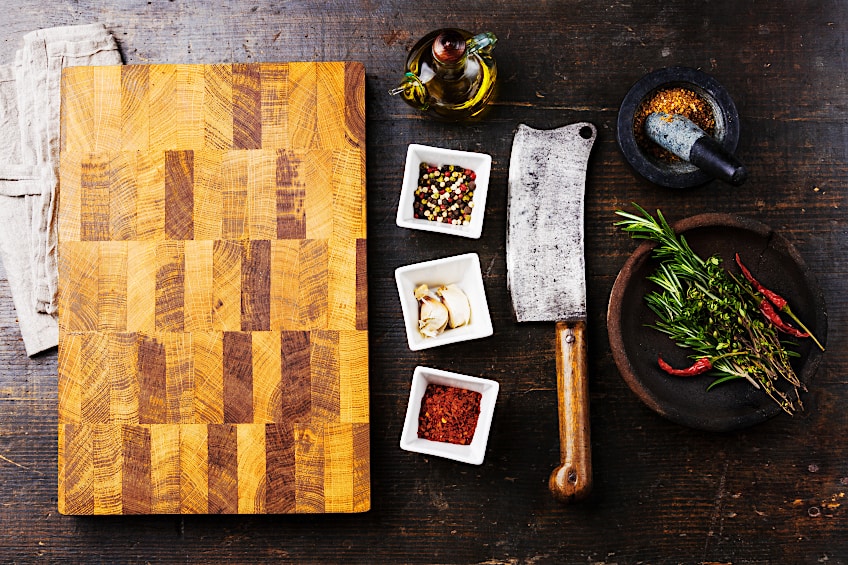
End grain boards can easily be identified by their checkered pattern and relative softness. What makes end grain boards so expensive then? Well, they tend to attract less bacteria and moisture thanks to the configuration of their wood, and what’s more is that once your knife makes a depression or cut on the board’s surface, the board is capable of healing that section by simply restoring those wood fibers to their original position.
Edge Grain Cutting Board
Edge grain cutting boards are sort of the inverse of end grain ones. Essentially, they are also made by combining different wood boards, but in this instance, the sides of the board face upward to form the surface of your cutting board. Unlike the checkered pattern on the end grain board, edge grain boards form a series of stripes along the board’s surface.
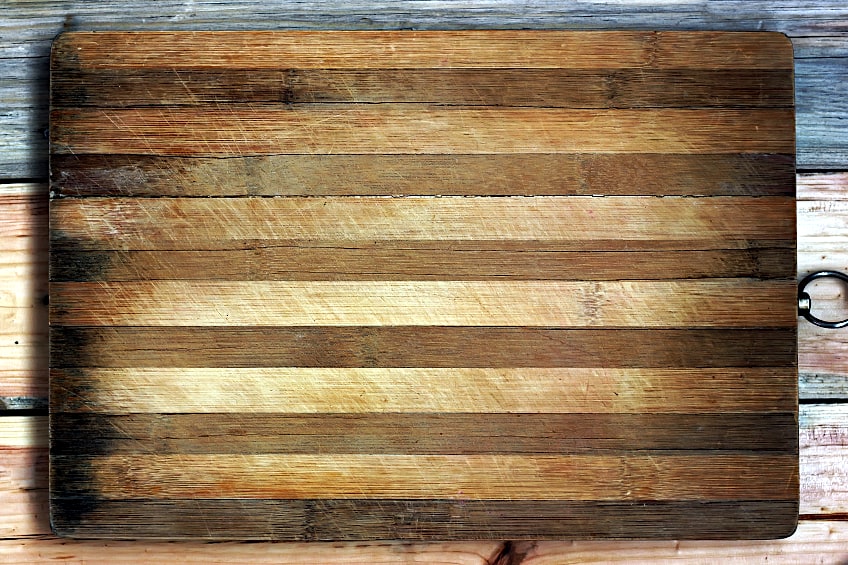
Due to the manner in which the boards have been cut and arranged, they tend to be significantly heavier than end-grain wood boards. This offers the board greater stability, but as a drawback, they don’t have the same regenerative ability, and because of the way the wood is arranged, they tend to dull knives more easily.
Hardwood Over Softwood
Choosing hardwood over softwood is always recommended. Why? Softwood might seem like a good idea considering that if the wood you choose is too hard, there is a possibility that the surface could damage the cutting edge of your knife. However, any cutting board made out of softwood species will not last very long, especially if you’re going to be using it fairly often.
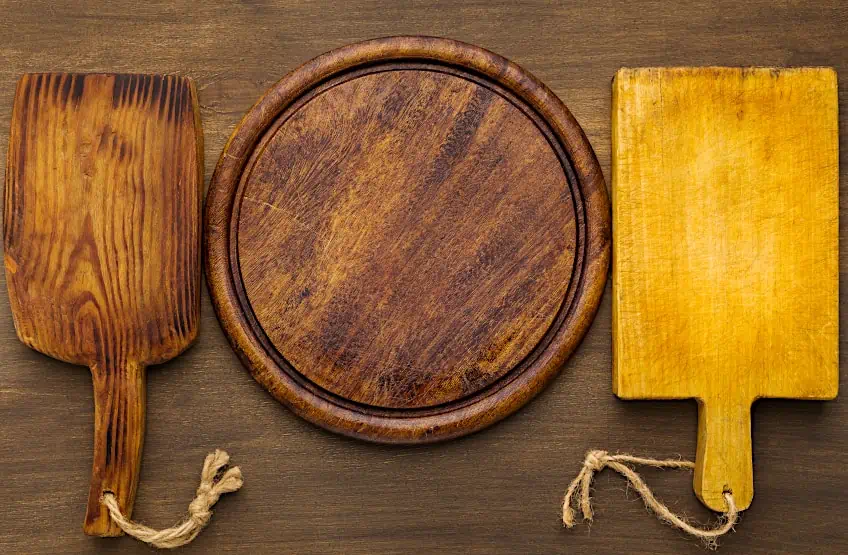
On the other hand, you don’t want to choose a wood species that is too hard either. There is an ideal ratio of hardness to malleability that is ideal for a cutting board, such as the wood species we mentioned previously. Remember that hardwood species can be treated and repaired, but softwood species will simply deteriorate over time due to them being inherently inferior in this application.
Are There Wood Species That Should Be Avoided?
Wondering what wood not to use for cutting boards? Most hardwood species are perfectly fine to use for the creation of cutting boards, but there are a few hardwood and softwood species that you should avoid. These include hardwood species that do not bear fruit, hardwood species with especially high porosity, and hardwood species with known toxins in their wood fibers.
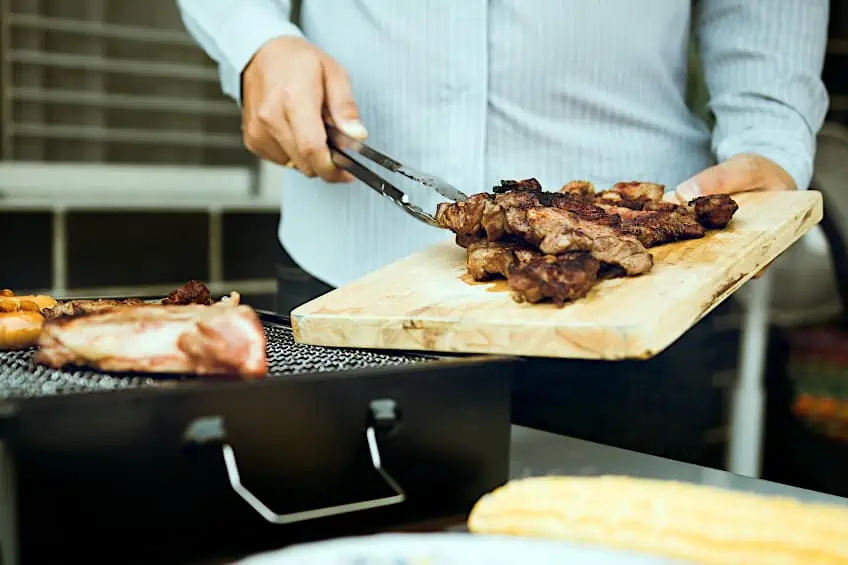
We would recommend avoiding softwood species altogether. It might seem like a good idea to create or purchase a cutting board made of softwood. After all, they are cheaper and readily available, but there’s a reason for this. Softwood species are not as durable as hardwood species, and you’ll likely find yourself replacing your boards often.
Now that you know what the best hardwoods for cutting boards are, what characteristics to look out for in a cutting board wood, what wood not to use for cutting boards, and how to maintain your cutting board, it’s time for you to get out there and put your newfound knowledge to the test! Remember to consider what your cutting board will be used for, how often it will be used, and what is required to maintain it before purchasing or creating one.
Frequently Asked Questions
Which Cutting Boards Are the Most Hygienic?
Many people recommend using hardwoods for cutting boards. Bamboo tends to be the most hygienic wood for cutting boards though, even compared to hardwood species. Bamboo is hard, flexible, and tends to absorb very little moisture compared to hardwood species, making it the ideal material for a cutting board.
Do Cutting Boards Make a Difference?
Cutting boards can absolutely make a difference considering that they give you a stable platform on which to prepare your food, and they ensure that your knives will last longer. Cutting boards also minimize mess in a given space, since food is prepared in only one spot.
How Often Should You Wash a Cutting Board?
Cutting boards, regardless of the material they’re made out of, should be washed as often as possible to minimize bacteria cultivating on their surface. Whether you’re cutting bread or preparing meat, always ensure that your cutting board is washed with soap and hot water once you’re done.

I have been into woodworking since 2005 and woodturning since 2011. Because of my love for wood and woodworking, I started woodhappen.com to teach other enthusiasts about how to finish and seal wood, the best woodworking tools, the different types of wood, and everything else related to woodworking! Read more about me here.

